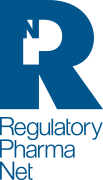In accordance with ICH Q3D (EMA/CHMP/ICH/353369/2013), a process to assess and control elemental impurities in the drug product, developing a risk-based control strategy, must be implemented.
The ICH Q3D is in force since June 2016 for new marketing authorizations and will come into effect also for authorised products in December 2017.
ICH Q3D requires the control of all the elemental impurities in drug product potentially coming from any sources (residual catalysts that were added intentionally in synthesis or may be present as impurities, e.g., through interactions with processing equipment or container/closure systems or being present in components of the drug product).
Within ICH Q3D, the Permitted Daily Exposure (PDE) for 24 elements of toxicological concern are provided, classified on the basis of safety, occurrence and administration route, and the drug product manufacturers are guided through the application of a risk-based approach to control elemental impurities.
Two approaches are foreseen for the identification of the elemental impurities: drug product approach (the manufacturer will scan batches of the drug product for the presence of any elemental impurities) and component approach, which is preferred (foresees the assessment and summary of the contribution of elemental impurities from each component and the comparison of the combined contribution of an element with the PDE in the risk assessment).
It is explicitly stated that analytical data only, without a risk assessment, will not be sufficient and the justification to omit a routine control will have to be more extensive than just data from a few batches.
After having identified the potential impurities that can be present in each drug product, the manufacturer should refer to the PDEs to set a control threshold and, if needed, implement measures to assure that the elemental impurity level does not exceed the PDE.
Considering that PDEs have been established for 24 elements and are provided in ICH Q3D for oral, parenteral and inhalation administration route, the Marketing Authorization Applicants/Holders are expected to determine, following the principles as outlined in the guideline, acceptable limits for elements and routes of administrations that are not foreseen.
The drug product manufacturer is responsible for the Risk Assessment of its products, that should be based on scientific knowledge and principles. The Risk Assessment should be done for each drug product and should be complete and requires a productive cooperation between the Marketing Authorization Applicant/Holder and the suppliers of the drug substance and excipients. In fact, if the supplier of the raw materials or active ingredient does the Risk Assessment he is encouraged to share it. Information can be drawn from each pertaining source and it is allowed to refer to the knowledge gained among different strengths.
Routine testing on the manufacturing equipment or the setting of a specification is not required if evidence is provided that no contamination is due to the manufacturing equipment or that the level of an elemental impurity does not exceed the control threshold.
A summary of the Risk Assessment and information on any measures taken to ascertain compliance should be included in the dossier (a location is not foreseen yet but could be the Justification of Specifications…) and the full documentation should be available on site for inspection.
The application of this ICH Q3D guideline requires a scientifically sound approach and will therefore be challenging both to companies to produce the Risk Assessment, and to assessors to review it. RPN offers full support to face this challenges and meet the deadlines established by the ICH regulatory bodies.



